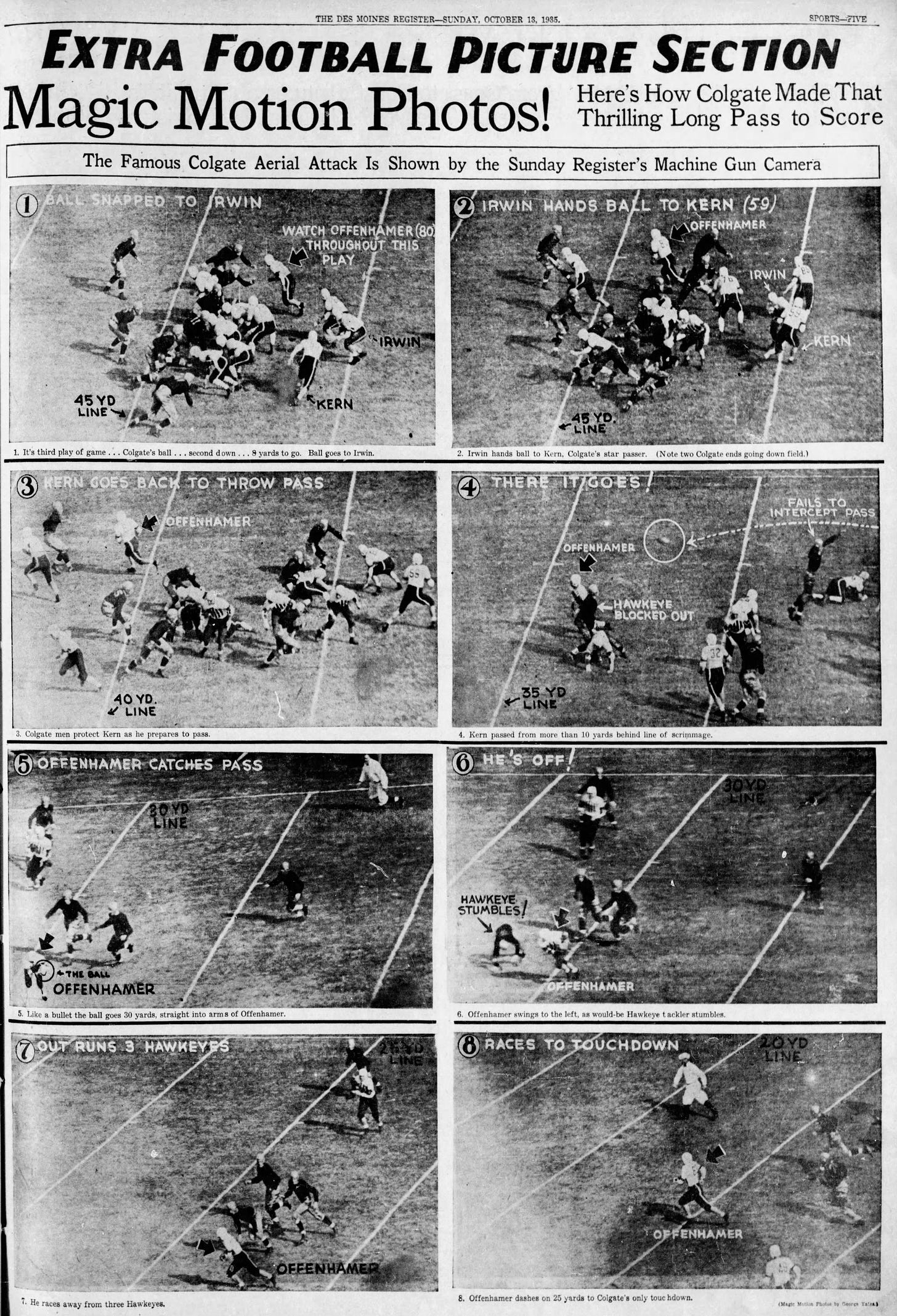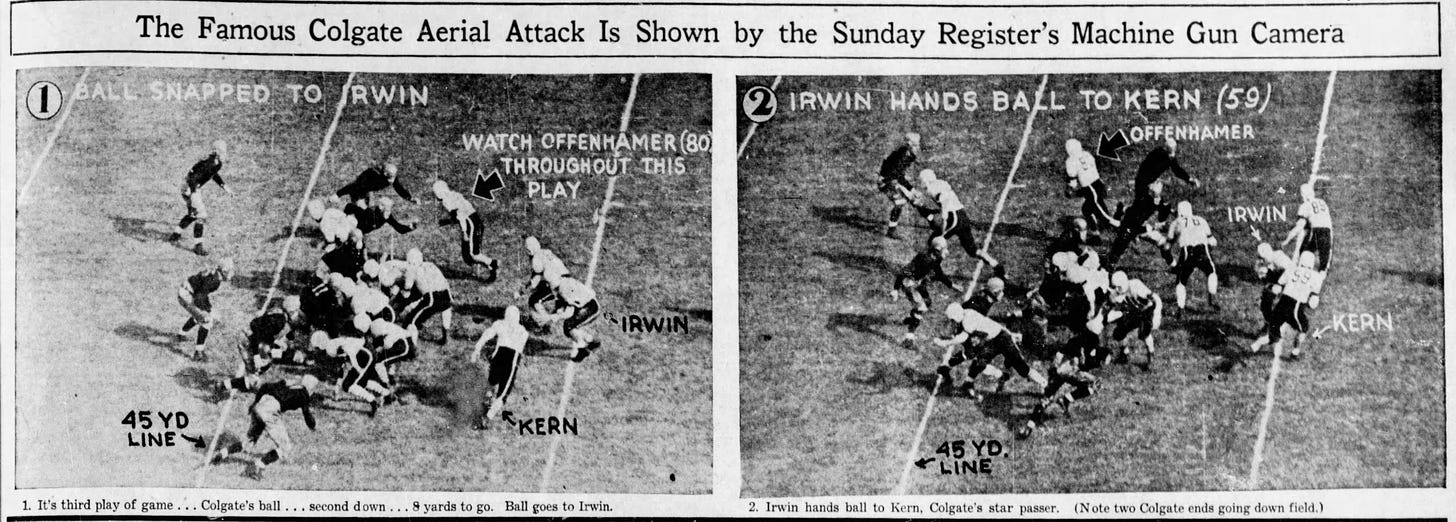Today's Tidbit... The 1935 Version Of Instant Replay
We see and understand football based on how we consume it. Before stadiums had video scoreboards, watching a game in person meant there were no instant replay or slow-motion opportunities. Instead, you had to pay attention and have a reasonable understanding of football to analyze the events on the field. In contrast, today's fans watching games on television benefit from replays, circles or lines superimposed on the screen, and commentary from the folks in the booth.
Before television, of course, the only games you could see were those you attended in person, so fans who did not attend a particular game had to rely on newspaper reporters to tell them what happened and why. But, of course, newspapers, magazines, and other print publications had their version of instant replay: a sequence of photographs.
I was reminded of these sequences when I read an article in the October 13, 1935 edition of the Des Moines Register and noticed they had ten pages covering sports. The Register devoted a good portion of those ten pages to college football. One page had an eight-photograph sequence showing Colgate's lone touchdown pass during Iowa's upset of the Raiders the previous day.

So, here's the sequence that allowed the good folks of Des Moines the opportunity to analyze one play from the previous day's action.
Here are the four pairs of images.
Football Archaeology is reader-supported. Click here to buy one of my books or otherwise support the site.






